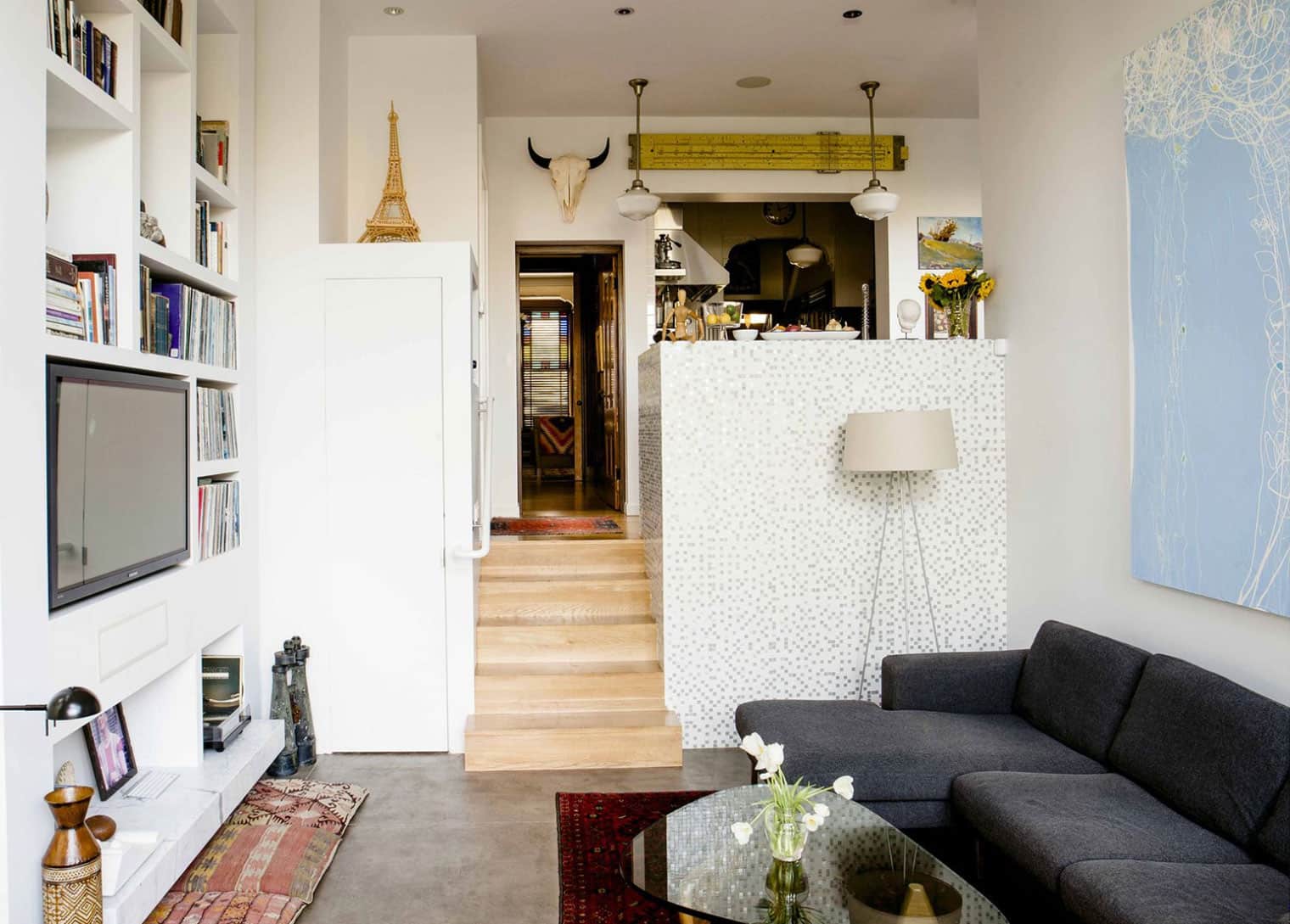20 Feb
Doug Mehl’s Labor of Love
Doug saw beyond the Pepto-Bismol pink walls and molding, and created a home that’s comfortable, unpretentious and “a little quirky.”
In the cinematic version of the Mehls’ life, their circa-1891 Victorian home is the fourth character. They purchased it 26 years ago, just two years after they married, and it has changed and grown along with their family. The story of its restoration and remodel is the very definition of the term “labor of love.”
As the phrase suggests, there were obstacles to overcome. “We moved in on Halloween,” says Doug, an architect and principal at Fennie + Mehl. “It was fitting, because it looked like a haunted house.”
The former owner had worked as a janitor in a neighborhood school, and Doug suspects he brought home leftover paint from work to use at home. “Every wall and piece of molding was painted, mostly Pepto-Bismol pink, although there was some blue too,” says Doug. “It was…unbelievable.”
“The good news and the bad news was that nothing had been done to it over the years,” says Theresa, noting that under the paint almost all of the old period details remained. “We knew as soon as we walked in that we wanted it.”
Enthusiasm for the house may have translated into remodel optimism. “I remember, even though we didn’t have two extra cents to our name, I told our real estate agent that we would have it fixed up in a couple of years,” says Theresa. “She kind of laughed and said it might take a bit longer than that. I didn’t dream it would take more than 20 years.”
Second, they would remodel it as they had the funds. “We weren’t continually working on it,” says Doug. “We’d do a chunk of work as we had the money, and then we’d take some time off. There were intense periods, though.”
In the intense category: The remodel of the upstairs, when the whole family lived in the dining room for six months; the addition of a garage, which had to be excavated under the house; and a 1,000-square-foot modern addition. (And, viewed from the perspective of this list, perhaps the remodel can be viewed as rapid rather than lengthy.)
If it sounds time consuming and costly, that’s because it is. Most who have undergone a major remodel understand the process comes with some dark nights, but for people who did a fair amount of work themselves, the Mehls are surprisingly unscathed. “We never thought of stopping or giving up,” says Doug. “When we bought this house we made a commitment to do it right or not at all.”
Theresa feels the same way. “Obviously, there were hassles. I remember once when the upstairs was gutted and we were all sleeping in the dining room, I was getting ready for work and came out of the still-functional, second-story shower wearing only a towel and a gust a wind came through the framing and blew construction materials all over me,” she says. “But, when you are going through it, you just laugh and trudge on. I have no regrets.”
The first stage—restoring and repairing the original part of the house—had one easy part: The decision to keep it original. “There was never any question we would restore the main part of the house,” says Doug. “We felt an obligation to the house and the neighborhood to do it right.”
But when it came time to append an addition to the back of the house, the architect didn’t feel beholden to the past. The two-story structure has a family room on the lower level and a master bedroom and bathroom on the upper level. Doug designed it smaller than he was allowed to in order to better fit with the existing house and in consideration of the neighbors. The kitchen acts as the transition between old and new. “It’s kind of like we are time travelers,” says Doug. “We travel through time and space in our house multiple times a day.”
“I think you can appreciate the historic qualities of old buildings, but when designing the new addition, I didn’t want to look back,” says Doug. “I did make something that was sympathetic to the original building, but it’s of this century. I feel like we have the best of both worlds in the house.”
As it turned out, work was wrapping up on the house as Kate, their daughter, was headed off to college. That also coincided with their neighborhood becoming one of the hottest areas in San Francisco, with home prices reflecting desirability. Facing an emptier nest and an assured profit, many couples would be tempted to cash out, but not the Mehls.
A modern backyard on a Victorian house.
When designing the new addition, Doug made sure it dropped down from the main house. This makes a smooth transition from family room to backyard.
“This house is a reflection of our personalities. It’s comfortable, unpretentious, and a little quirky,” says Doug. It’s such a good fit that he intends to stay long term, adding with a laugh: “It’s going to be our mausoleum!”
Theresa says that when the house next door sold for an eye-popping sum, friends started asking her if she and her husband planned to sell. “I told them: ‘I’m not going anywhere,’” she says. “This is our home, and I love it.”

